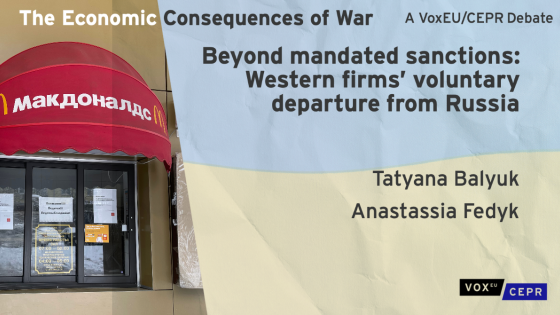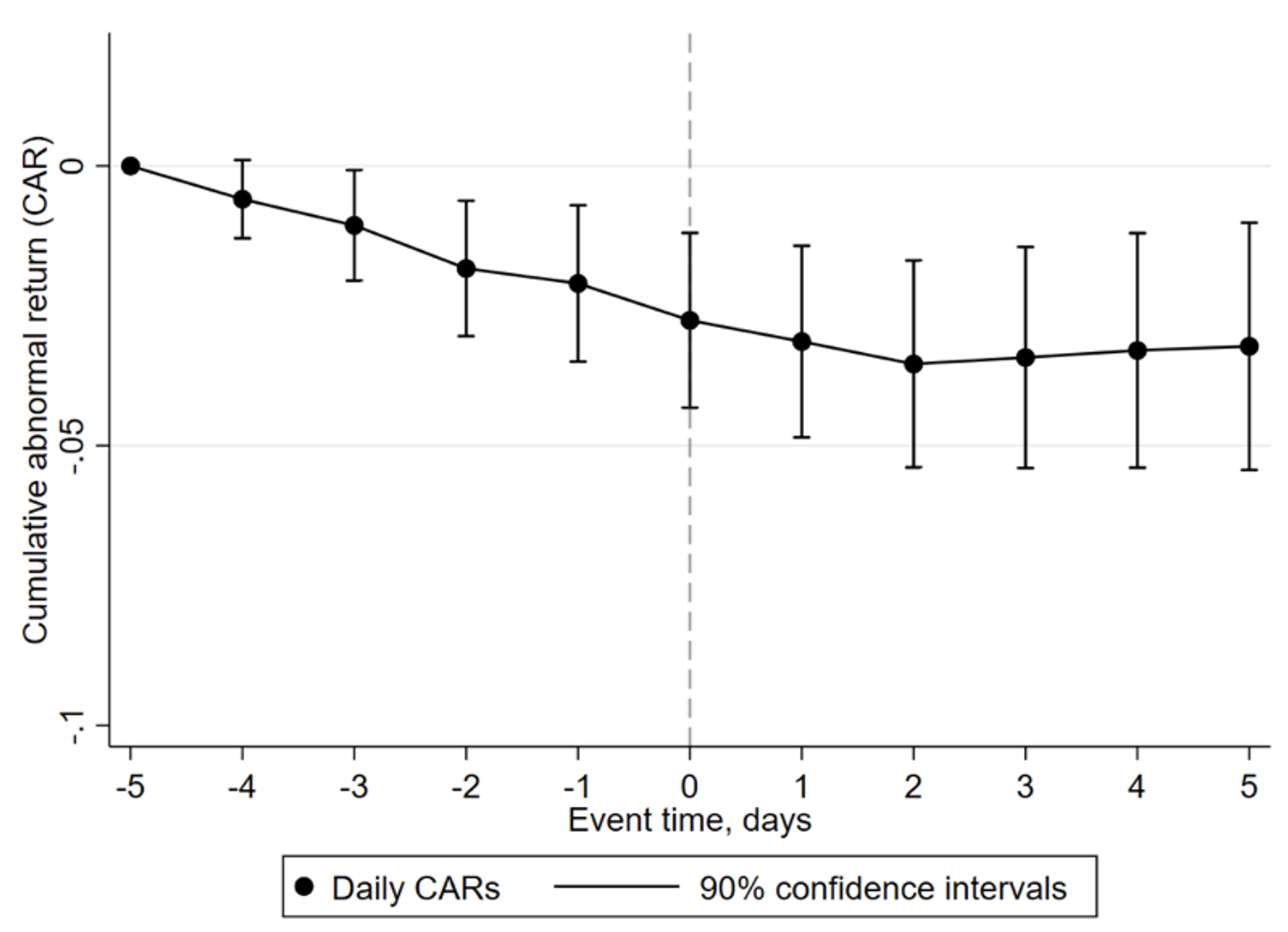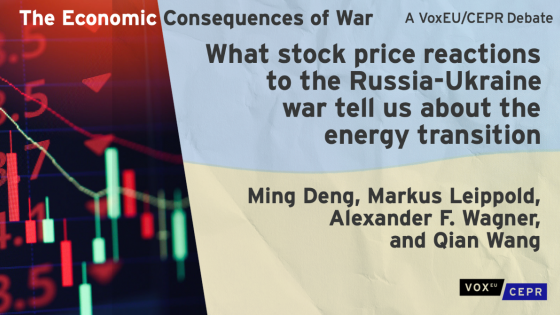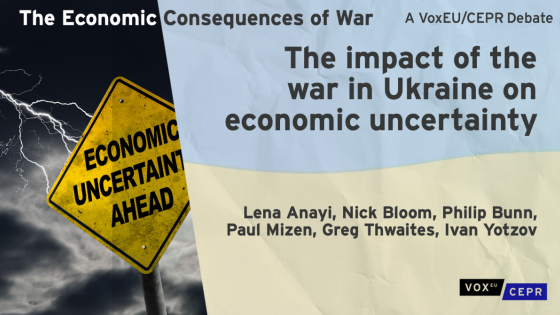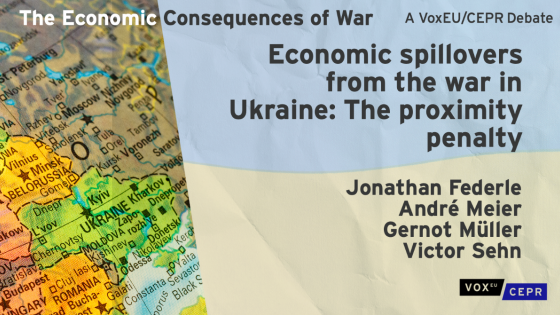Russia’s invasion of Ukraine in February 2022 triggered a vast array of sanctions by governments around the world, ranging from embargoes on Russian exports to freezes of assets owned by the Russian state. However, for many corporations, exit from the Russian market was not mandated by government sanctions and instead remained an individual decision. How did individual firms approach this decision? And how did the economics of exiting from – or staying in – the Russian market pan out?
There is an active economic and policy debate regarding the determinants and consequences of firms’ decision to exit from Russia. Media outlets initially reported negative operational effects of firms’ decision to leave, such as declines in earnings and possible losses on asset sales due to fire-sale discounts. However, Sonnenfeld et al. (2022) observed that firms exiting Russia experienced better returns from 23 February 2022 to 8 April 2022 than those that stayed, interpreting these results as financial markets rewarding firms that exit Russia and punishing those that stay. It remains an open academic question whether reputational damage from staying in Russia outweighs operational risks from leaving, and what the net effect on firms leaving Russia in response to its aggression has been.
In Balyuk and Fedyk (2023), we examine both the determinants and the consequences of US-traded firms’ exit from Russia. We focus on large firms that had business operations in the Russian Federation according to their latest public disclosure statements (form 10-K) prior to February 2022. We measure the extent of each individual firm’s exposure to the Russian market in two ways: (1) using the fraction of the firm’s operations (using revenues if available, and other metrics if not) that were in Russia before the invasion on 24 February 2022, hand-collected from firm filings, and (2) using the immediate (first-day) return on 24 February 2022 as a proxy for how exposed each firm was to the region. We identify each firm’s exit announcement (if any) from 8-K filings, press releases, and media announcements between 24 February 2022 and 31 March 2022. As can be seen in Figure 1, exit announcements peaked in the first week of March 2022 and tapered off by the end of that month.
Figure 1 Histogram of exit announcement dates
Notes: This figure shows the distribution of Russian exit announcement dates over time, for large US-traded firms.
While over 80% of the firms in this sample have chosen to limit their Russian operations in some way, there was substantial heterogeneity across industries. For example, the healthcare sector was the most likely to retain operations in Russia, with 64% of firms staying. Across the board, larger firms were more likely to exit Russia, potentially due to greater scrutiny and investor attention. Consistent with operational costs, firms with larger exposure to Russia were more likely to subsequently remain in Russia (merely scaling back their operations), while less-exposed firms withdrew or suspended their Russian operations.
In terms of stock market performance, US public firms with exposure to Russia began to experience worse returns even before the start of the war, in early February, reflecting greater risk from Russia amassing troops along the Ukrainian border. Prices of Russia-exposed firms diverged further after the invasion began on 24 February 2022, especially for those firms that ended up limiting their operations in Russia through withdrawals or suspensions. This suggests that the decision to leave Russia is an endogenous choice, with firms leaving Russia because staying in Russia became costly.
To examine this dynamic more closely, we look at the stock market returns right around firms’ announcements of exit from Russia. Figure 2 reproduces the average abnormal stock price reaction from five days before each announcement to five days after. What we see is a strong pre-trend: prior to announcing a withdrawal or suspension of their operations in Russia, the announcing firms experienced a significant negative return, totalling more than -3% over the course of a single week. However, one or two days after the exit announcement, these firms no longer see any additional negative returns and sometimes even experience a slightly positive rebound. This same pattern is present both with firms that have higher share of their operations in Russia, and those with smaller Russian operations. Our results support the notion that firms face pressure from their shareholders to discontinue operations in Russia, and exit announcements help to alleviate this pressure.
Figure 2 Cumulative returns around Russia exit announcements
Notes: This figure shows daily cumulative abnormal stock returns on US firms which divested from Russia over the window from −5 to +5 trading days around each firm’s exit announcement.
We investigate this further by estimating a random-effects survival model of the exit hazard linking the timing of firms’ exit decisions to returns. Specifically, we test how a firm’s likelihood of announcing an exit on any given day relates to the recent stock performance of the firm prior to that day, documenting that firms’ exit decisions and their timing are strongly related to recent negative stock performance.
There are several potential interpretations for our results. First, let’s consider the possibility that firms face operational risk from their exposure to Russia, with more exposed firms losing more value and therefore being more likely to exit the Russian market. This is counter to the patterns we document, where firms with greater operational exposure to Russia were less likely to make exit announcements. Furthermore, controlling for operational exposure (proxied either by the share of business operations in Russia or by the firm’s war-day stock return) does not change the association between exit announcements and returns (i.e. the negative returns immediately preceding the exit announcement and flat returns after the announcement). Second, it may be that the exit announcement itself is operational bad news, and the preceding negative return reflects the market’s anticipation of this bad news. This explanation is not consistent with the immediate cessation of the negative price trend after the announcement. Thus, while the anticipation of operational losses can contribute to a firm’s decision to exit (or rather, not exit) Russia, it is unlikely that operational losses are the main driver of our results.
Instead, reputational pressure appears to complement pure operational exposure as a main driver of firms’ decisions on whether to leave the Russian market. Specifically, the return patterns are consistent with firms facing pressure from their shareholders to discontinue operations in Russia, and subsequent exit announcements alleviating this pressure. In the Corporate Social Responsibility (CSR) literature, there is evidence of widespread behind-the-scenes intervention from investors in firm decisions (e.g. McCahery et al. 2016), and both fundamental and non-fundamental stock price movements impact firms’ investment decisions (e.g. Edmans et al. 2012, Bond et al. 2012, Foucault and Fresard 2014). The notion that investor attention to firms’ corporate social responsibility can have a direct effect on firms’ actions seems to play out likewise in the case of Russia’s aggression against Ukraine. In this setting, market pressure contributes to firm decisions with potentially very large operational consequences – exit from Russian operations, precipitated by negative firm-level returns of over -3% within a matter of days. The relationship between ethical decisions such as firms’ voluntary exit from Russia and stock returns is a nuanced one. But one conclusion stands out: pressure from the firms’ shareholders is an important, albeit often overlooked, motivating factor for corporate exodus from Russia, complementing state interventions such as sanctions.
References
Balyuk, T and A Fedyk (2023), “Divesting under pressure: U.S. Firms’ Exit in Response to Russia’s War against Ukraine”, Journal of Comparative Economics, forthcoming.
Bond, P, A Edmans and I Goldstein (2012), “The real effects of financial markets”, Annual Review of Financial Economics 4: 339–360.
Edmans, A, I Goldstein and W Jiang (2012), “The real effects of financial markets: The impact of prices on takeovers”, Journal of Finance 67: 933–971.
Foucault, T and L Fresard (2014), “Learning from peers’ stock prices and corporate investment”, Journal of Financial Economics 111: 554–577.
McCahery, J A, Z Sautner and L T Starks (2016), “Behind the scenes: The corporate governance preferences of institutional investors”, Journal of Finance 71: 2905–2932.
Sonnenfeld, J, S Tian, S Zaslavsky, Y Bhansali and R Vakil (2022), “It pays for companies to leave Russia”, Working paper.
